Our Verdict
The SanDisk Desk Drive SSD 8TB is a high-quality, high-performance desk-based drive that although expensive, has such high capacity it may be the only external storage solution you need. It's a useful piece of kit for creative professionals working in real time on files stored on the drive.
For
- Immense storage
- Attractive, compact build
- Good upload speeds
Against
- Not exactly cheap
- Overkill for casual needs
Why you can trust Creative Bloq
SanDisk claims that their new Desktop SSD range provides revolutionary speeds and immense capacities. “Small enough to fit on your desk. Powerful enough to transform your workflow,” is their statement, and when we first realised that the SanDisk Desk Drive SSD 8TB comes in a relatively diminutive box, not really any larger than an external SSD, housed a device with 8TB of capacity, we were impressed. There’s also a 4TB version, but even if you opt for the slightly cheaper model, SanDisk are offering a lot of file storage here in a very small package.
The product is designed to meets the needs of both casual users and professionals requiring substantial storage with swift access speeds. In this review, we’ll investigate their speed claims and test how living with the drive has been over the past few weeks. We’ll also look more into who this device is marketed towards, and whether that matches up to who we think it’s for, and of course how it matches up against the best external hard drives out there.
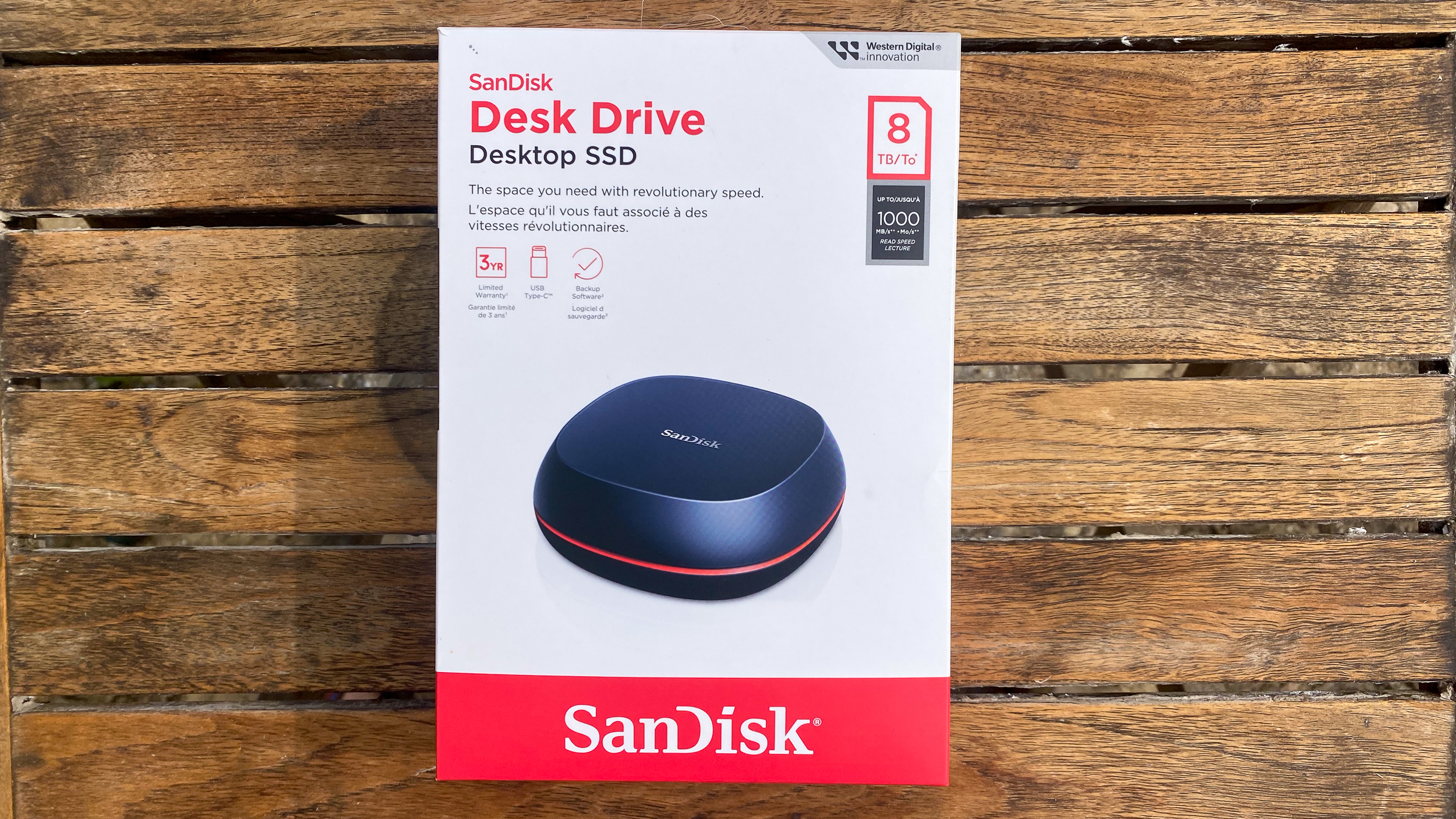
SanDisk Desk Drive SSD: Key specifications
| Capacity: | 4TB/8TB |
| Compatibility: | macOS 11+, Windows 10+ (exFAT formatted for compatibility) |
| Connector: | USB-C or USB-A adaptor available, power supply |
| Dimensions: | 99.2 x 99.2 x 40.2mm |
| Warranty: | 3-year limited warranty |
Design
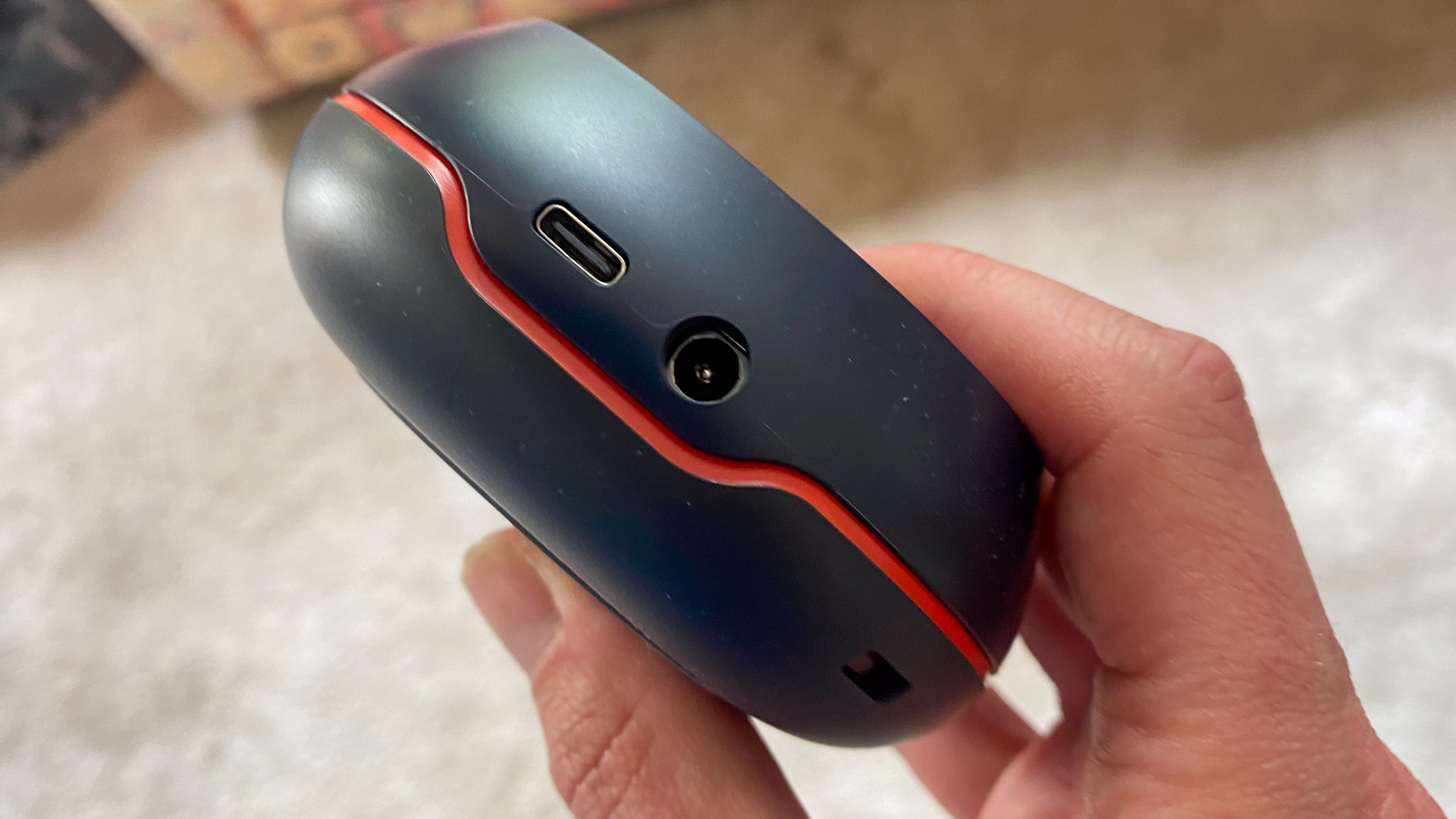
When the box arrived, we were impressed that so much capacity was contained within a device, that when unboxed, is no smaller than a hockey puck. This means it easily slips into place in most desk setups and is a welcome sign of technological progress for those of us who remember making space on desks and plugging in large AC mains plugs to power external hard drives just a gigabyte or two in size.
Design that assists the device’s ease of use is really the selling point here, and in fairness, it does the job well, with a super simple unassuming look and just two ports at the back, one for the power cable and one for the USB cable. The sleek, minimalist design means that it fits rather inconspicuously into any desktop setup whether at home or in the office and there’s a soft, brushed aluminium shell that aids effective heat dissipation. For a device that has such a high capacity and most probably a lot of continuous large file read/write requirements, this feels crucial for maintaining performance and prolonging the lifespan of the drive.
We weren’t surprised to see a power adaptor required for a device of this size, especially one that has so much capacity and will be under heavy load, but it’s worth bearing in mind that although the hard drive itself is small, you will need to make sure you’re close to a power board or plug to use it.
Functionality
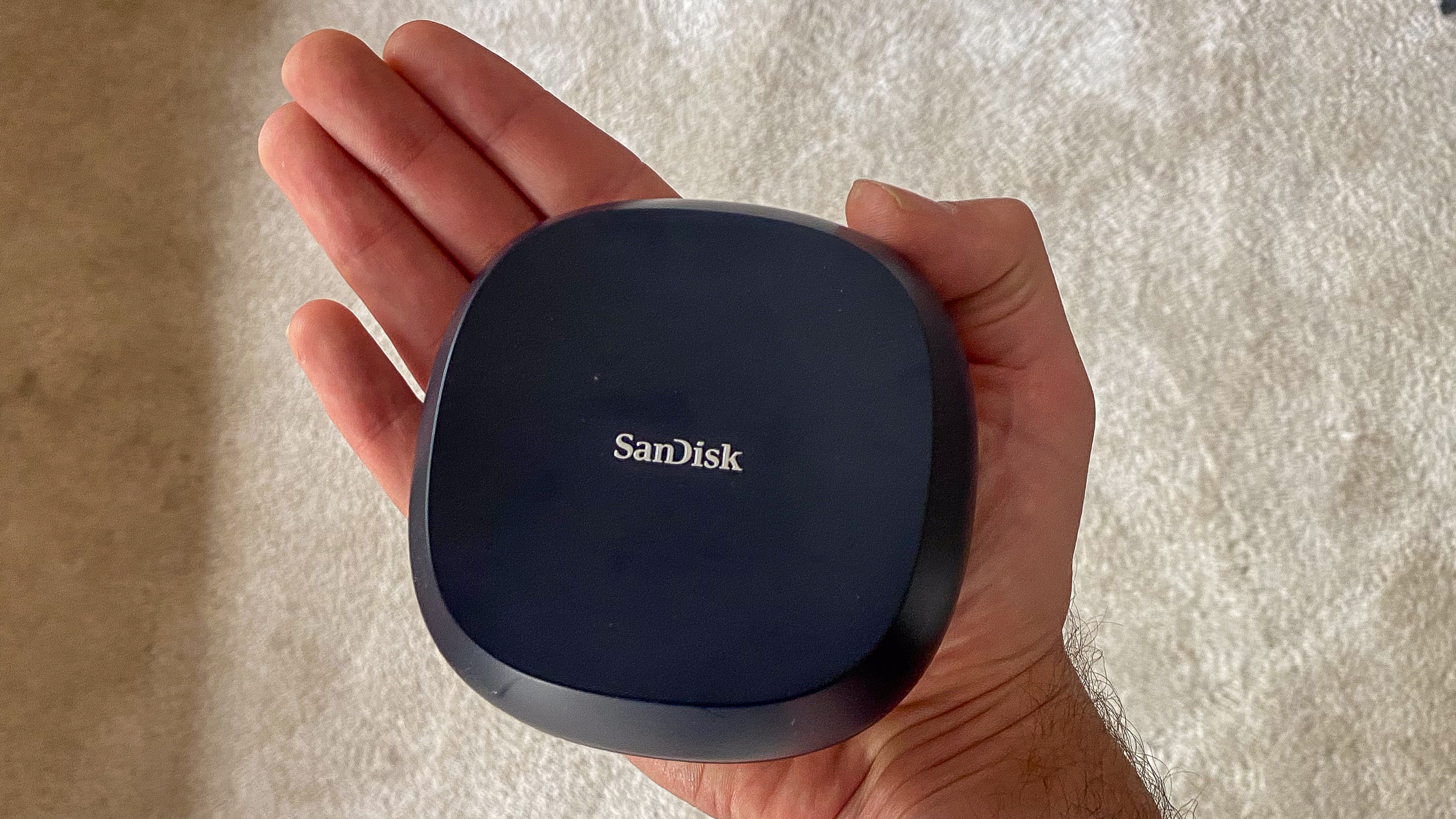
Once you’ve plugged the device in and found a place for it to sit on your desk, setup is straightforward, with the drive being plug-and-play ready for both Windows 10/11 and macOS 11+ systems. Once connected, the drive is instantly recognized, allowing you to begin transferring files without the need for additional drivers or software installations. It’s as simple as plugging in any external or USB drive.
The drive is equipped with a USB 3.2 Gen 2 interface and supports rapid data transfer speeds, making it possible to move large files quickly, and additionally and perhaps most importantly work with large files from the drive in real time. The device is backward compatible with USB 3.0 and USB 2.0, ensuring it can connect to a wide range of older devices without any issues, and it also supports SSD TRIM operations, which helps maintain top performance over time by ensuring that the drive does not slow down as it fills up. It essentially does this by knowing which files and areas of the drive are no longer in constant use and partitioning these off – it’s a useful feature and one that is especially important for users who plan to use the drive heavily and require consistent performance.
Performance
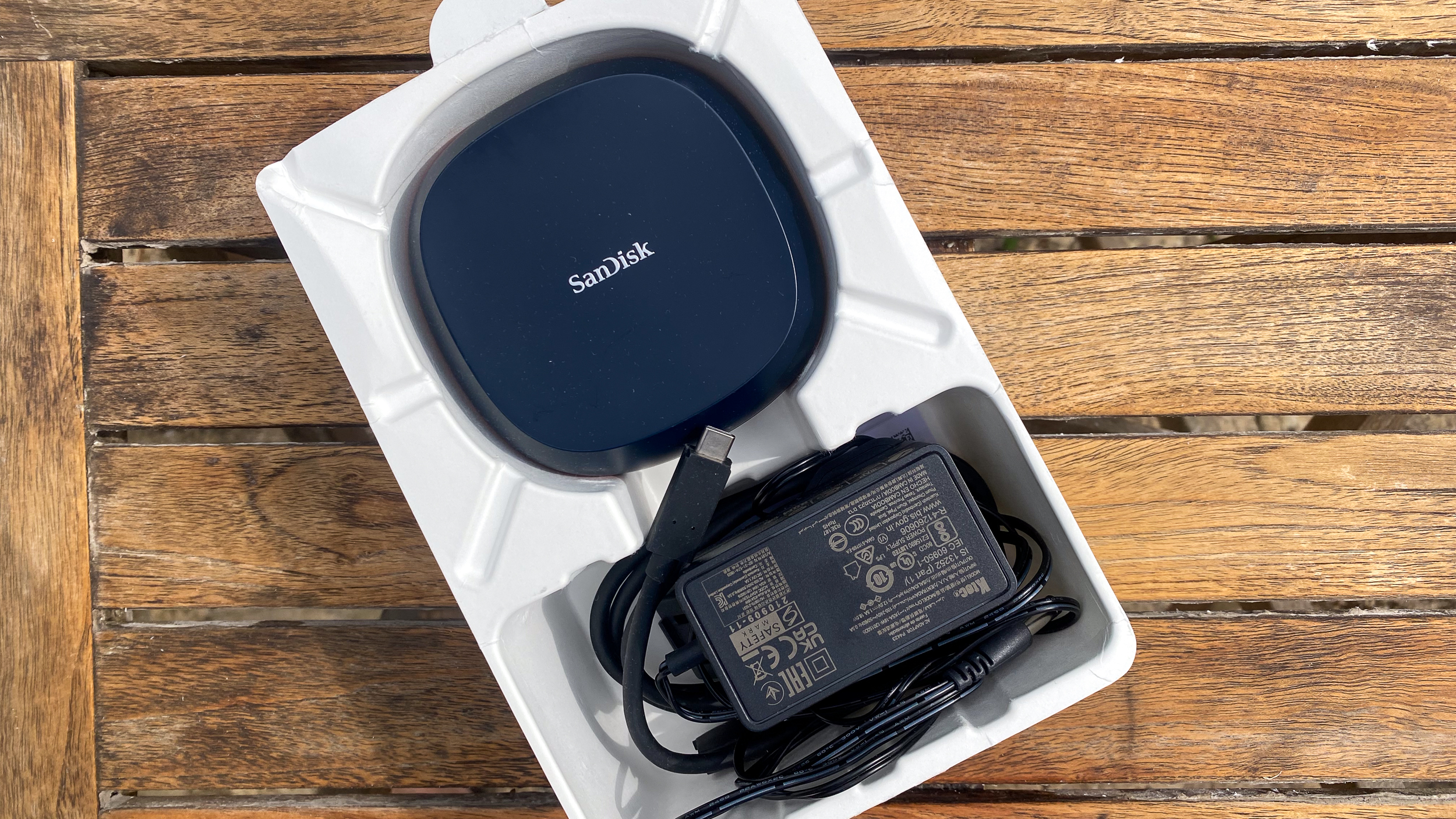
The high-speed performance of the drive is one of SanDisk’s key selling points. Thanks to the USB 3.2 Gen 2 interface, the drive can achieve data transfer speeds of up to 1050 MB/s, and we found it largely matched up to expectations depending on the size of the file. In our tests, we achieved around 800-900 MB/s for a 5GB file test, and over 1500 MB/s for just 1GB test in terms of write speed. For context, backing up a RAW photo library of 130GB took about 4 minutes when copying and pasting, so there is no doubt that this drive has real-world usable speed in terms of accessing data.
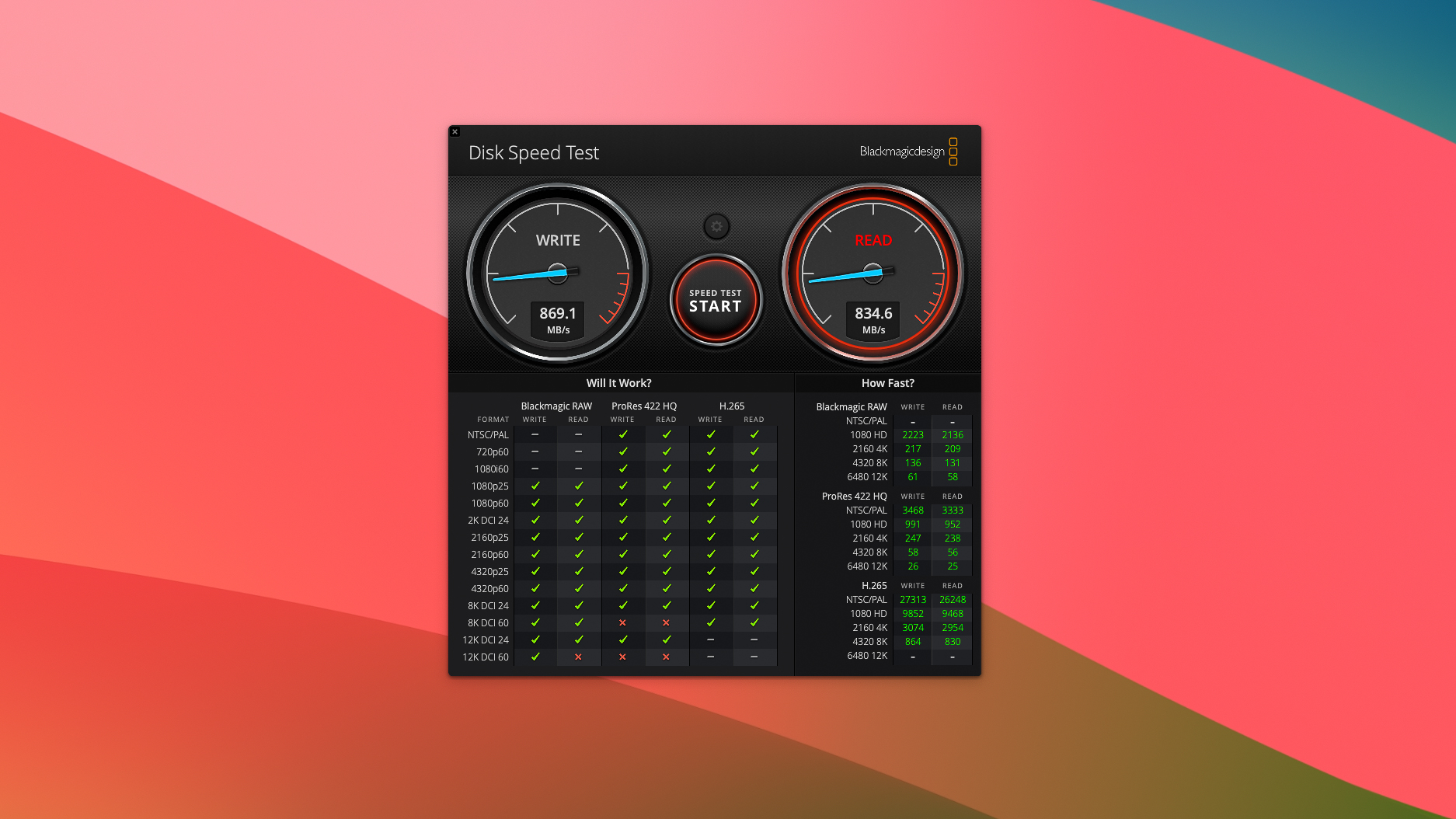
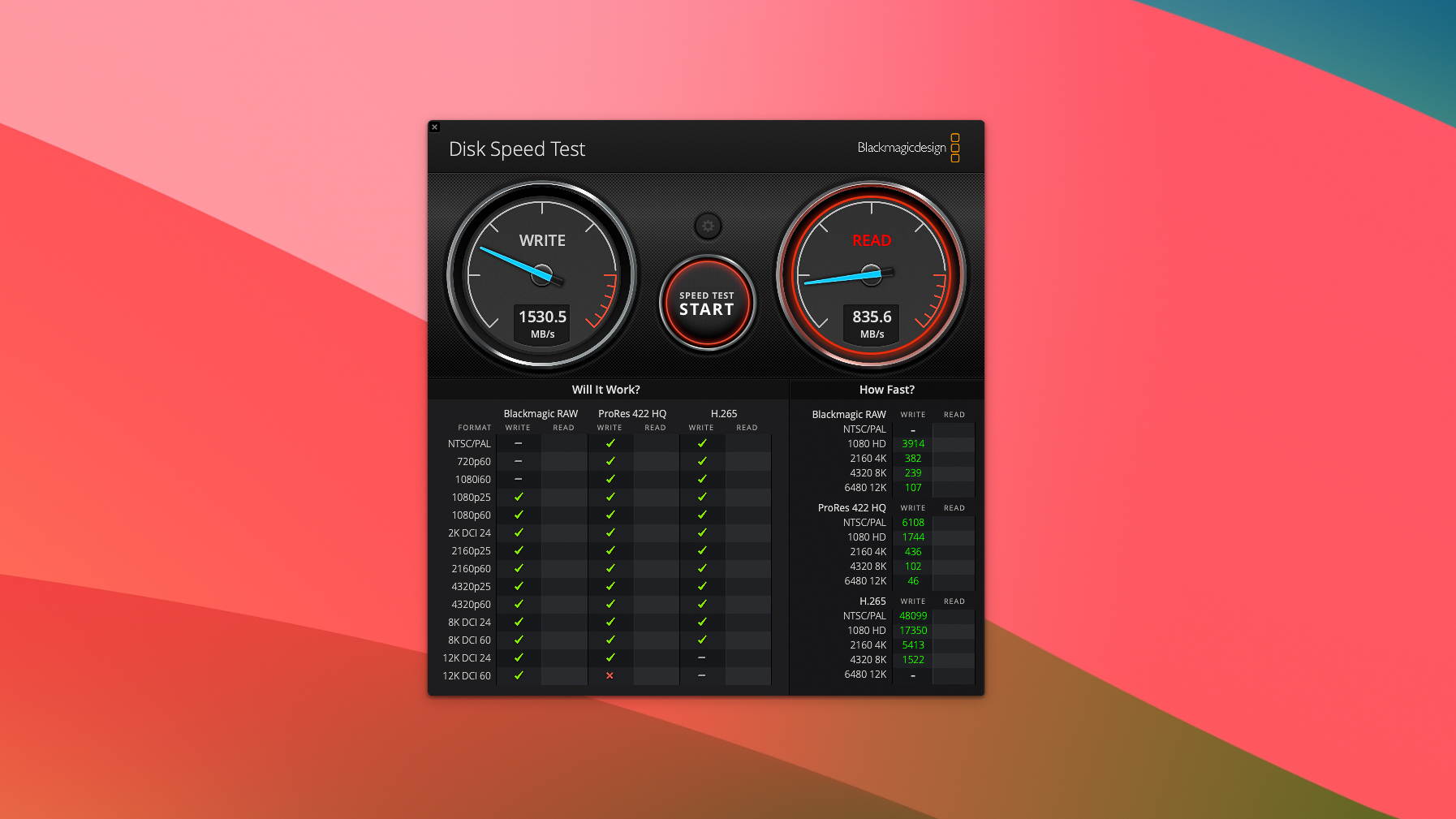
Overall, what this means is that it translates to significantly reduced waiting times when moving and working from large files. We tested the drive in Photoshop and Premiere Pro, editing large TIF files and many GBs worth of film footage and overall, it performed well when working straight from the drive. It means that SanDisk has successfully hit the professional market with this desk drive, allowing it to be genuinely useful to creative studios and business owners who need to keep large working files open across multiple projects. The performance somewhat justifies the initial expense of the drive, but it also means that it might not necessarily suit the causal user who just needs a backup system.
Another aspect of the drive’s performance worth mentioning is its reliability. SanDisk has a strong reputation for producing reliable storage solutions, and they’ve added a 3-year warranty to the drive which confirms their confidence with this product. Again, consistent performance over extended periods with no significant drop in speed or reliability is important for creative professionals, and it’s nice to see a drive with such high capacity promote reliability for long-term use.
Should I buy the SanDisk Desk Drive SSD 8TB?
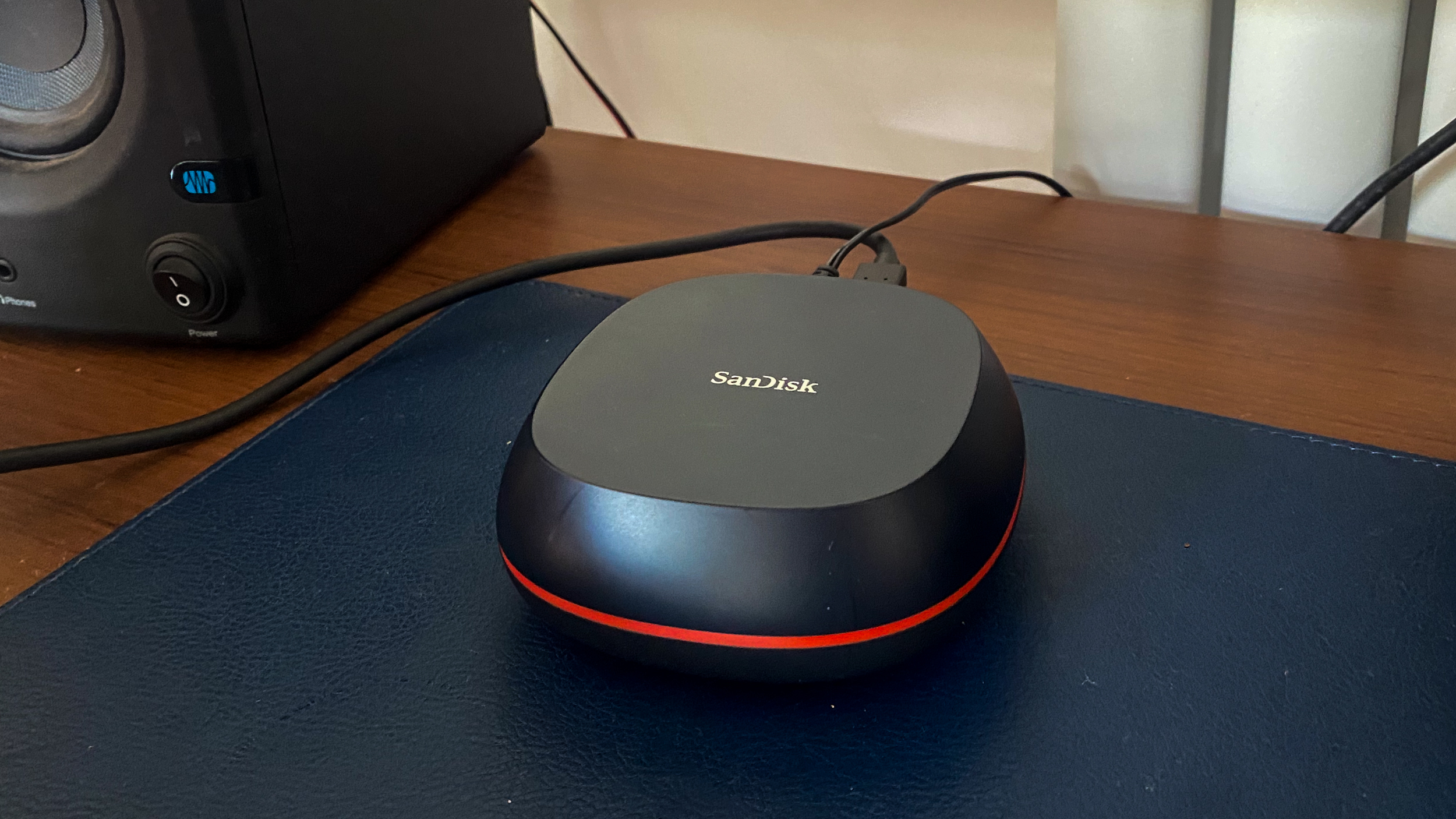
We found that the SanDisk Desk Drive Desktop 8TB SSD is a superb external storage solution, provided you have the right needs for it. Its high storage capacity and excellent performance have been packaged up into a simple, neat desktop package that can fit into most setups and discreetly do its job while you concentrate on your work.
It must be said however that it’s quite expensive. The 4TB comes in at just over £300, and the 8TB we tested will see you shell out over £600. There’s a 16TB version in the pipeline too, and we’d anticipate that hovering around the £1000 mark. It’s a lot of money for storage, and it’s another example of why we think this is a professional and creative studio storage solution only. It’ll fit into most business and agency workflows well, but if you’re a personal, casual creative who just needs a simple file storage solution, you’d be better of getting hold of a collection of external hard drives or looking at portable options like the SanDisk Extreme Portable collection which offer ample storage for most people – 2TB will set you back a couple of hundred quid less than this.
That all being said, we really liked this Desk Drive. There’s something reassuring about having a permanent high-capacity storage option always plugged into your computer and having it sit on your desk. We also like the look of it and feel that most creative professionals will be able to edit and work from the drive easily, whether you’re a video editor, photo editor or create digital design and artwork. The support for 256-bit AES hardware encryption also can ensure that sensitive data remains secure, which may suit people working on high-profile projects. It’s expensive, but we think you’d be hard pushed to find better, faster or more reliable high capacity storage on the market at the moment.
out of 10
The SanDisk Desk Drive SSD 8TB is a high-quality, high-performance desk-based drive that although expensive, has such high capacity it may be the only external storage solution you need. It's a useful piece of kit for creative professionals working in real time on files stored on the drive.

Jacob Little is a freelance writer and photographer and over the past ten years, has written for several national publications and brands. Based near Bristol, technology and the creative industries form the basis of his work, and he also provides content planning and project scoping services for agencies and businesses.
